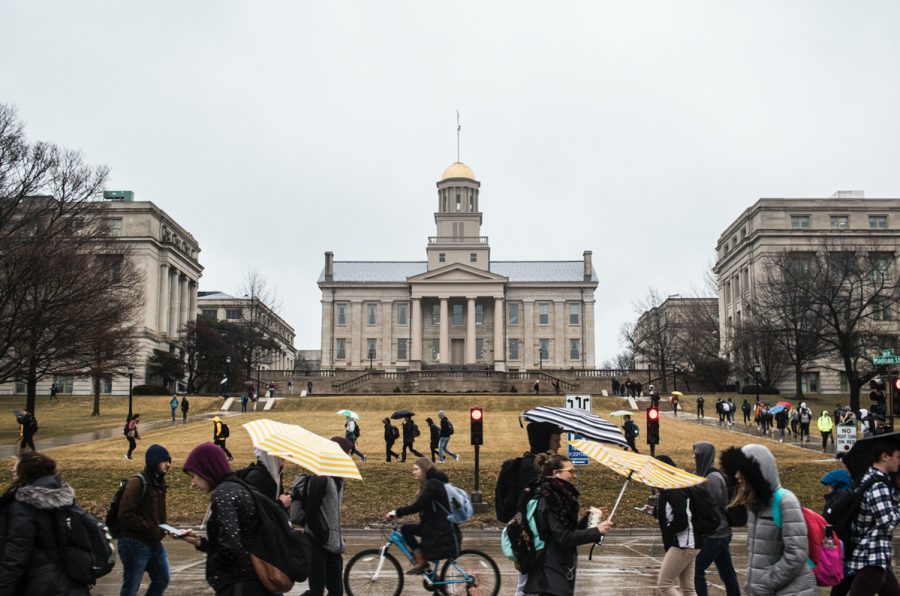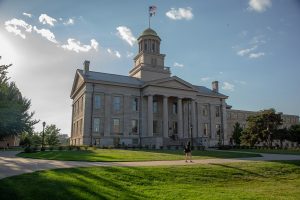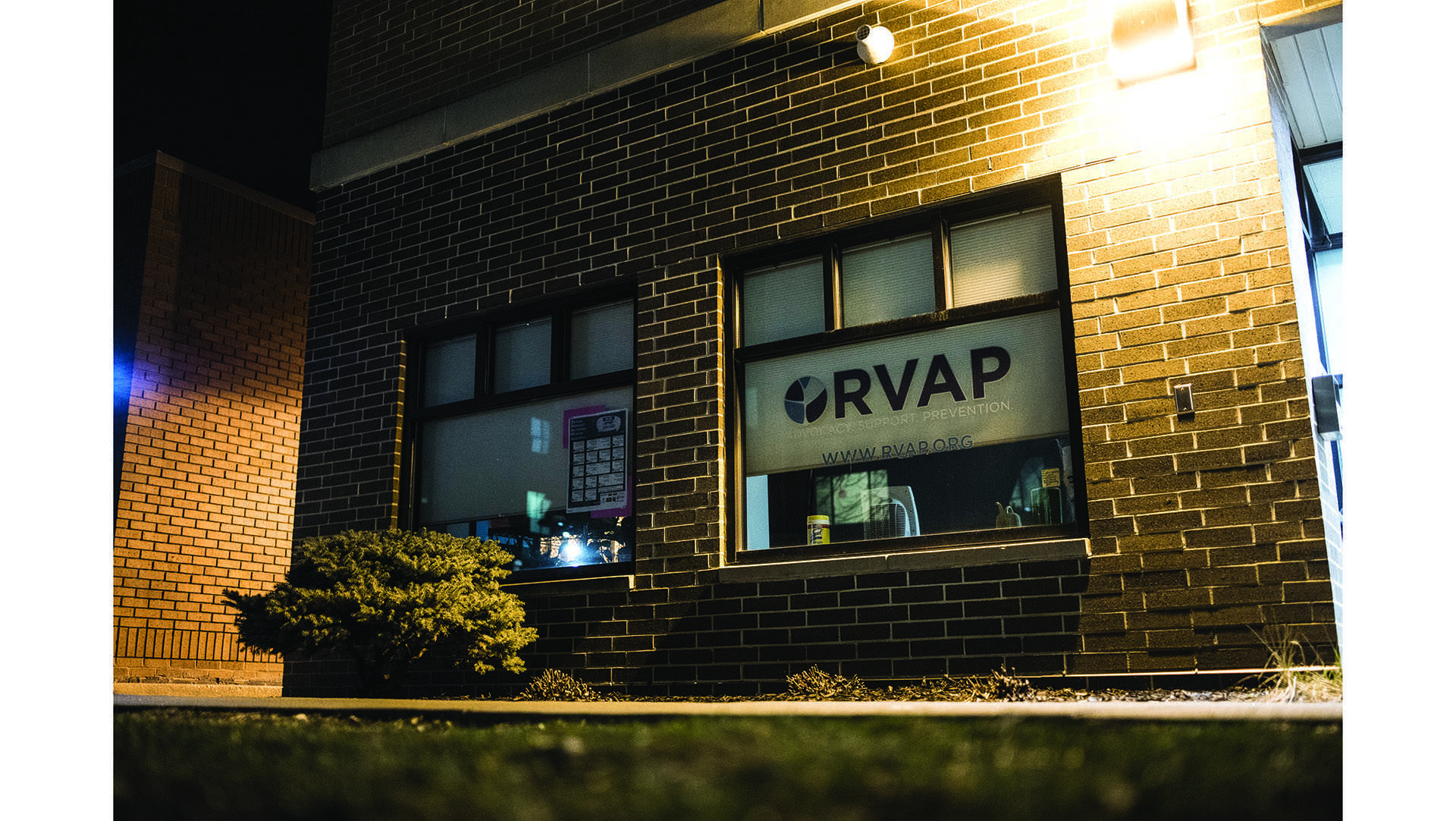UI facilities assess, prepare for climate change
In the eighth annual Iowa Climate Statement, researchers predict that future design of buildings will need to adapt to a warmer, wetter climate.
People cross Iowa Ave. on Monday, March 5, 2018.
October 21, 2018
In light of predictions by the most recent Iowa Climate Statement, University of Iowa Facilities Management said that, like the industry in general, the design and construction of future campus buildings may have to evolve with climate change.
The Associate Vice President for Facilities Management Don Guckert said that action will depend on how Iowa’s climate changes, and how fast.
“It’s a question of where you are geographically,” Guckert said. “I think climate change affects different areas differently. As far as this campus goes, we’re built to handle extremes.”
He said the UI central utility system is prepared for hot summers and freezing winters. The primary architectural concern in terms of changing climate would be how to handle increased precipitation.
“Our storm sewers may not be ready to take on the growing intensity of rain that we’re seeing around the country,” Guckert said. “The industry approach should be to monitor changing weather patterns, then modify building codes accordingly.”
Guckert mentioned the potential effect of climate change on future construction is an industry-wide issue, and national building codes will need to keep pace.
“There are standards in the industry based on historic projections and rainfalls,” he said. “I think changing climate is challenging existing building codes to be modified.”
RELATED: Rosario: Individual lifestyle changes won’t stop climate change
In a press release describing the findings of the Iowa Climate Statement 2018, the UI Center for Global and Regional Environmental Research (CGRER) stated that a warmer, wetter climate is on the Midwestern horizon.
U.S. climate scientists predict that average five-day heat wave temperatures for Iowa will increase by seven degrees Fahrenheit, and the strongest rainfall events of the year will double in intensity by mid-century.
“These are really scary numbers which will have negative consequences for the elderly, for the economy, for corn and soybeans, as well as beef, hogs and poultry,” CGRER Co-Director Jerry Schnoor said in the press release. “We must start now to adapt our built environment, including buildings and flood mitigation systems.”
The CGRER release went on to describe the already abnormal weather patterns present in Iowa, such as the recent Memorial Day heat wave and significant autumn rainfall.
“Warming over the Gulf of Mexico is helping feed large rain events in Iowa and the Midwest,” Schnoor said in the release. “People’s homes and businesses are being flooded that have never been flooded before.”
Although Schnoor emphasized that the most beneficial long-term method to deter future climate change damage would be reduced carbon emissions, he said buildings and facilities should be adaptable in the short-term.
“Changing our built environment to be more sustainable and resilient can help reduce future climate change while protecting us from the changes that have already occurred,” Schnoor said in the release. “The time to act is now.”
Ultimately, the eighth annual Iowa Climate Statement was signed by 201 science faculty and researchers from educational institutions statewide, urging others to fortify building and public infrastructure against changing climates.
Concerns extend beyond shelter from increased humidity and rainfall, but also have to do with storm water control and how to implement infrastructure to prevent future flooding.
“Building can be designed to withstand heavier driving rain by integrating rain screens, larger gutters and downspouts, and steeper roof slopes,” Iowa State University Associate Professor of Architecture and Center for Building Energy Director Ulrike Passe said in the press release. “Heavier rain events and higher water tables affect foundations, and standards going forward must reflect that.”






